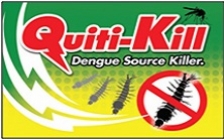DENGUE HURTS THE FAMILIES OF THE VICTIMS AS WELL…
Barangay Batasan Hills is home to several important national government institutions including the House of Representatives. But it did not seem an advantage in terms of protecting the residents from health risks, particularly, dengue.
The barangay is a dengue hotspot for several years. It yielded the most number of cases in 2012 among the barangays in Quezon City at 357. One of the factors contributing to the increased risk includes its population density, having 160,000 residents in a land area of only 8.57 sqKm. This barangay has one of the highest urban poor population, with families of five or more members, typically cramping in a house not more than 10 sqm, very conducive to disease transmission. Moreover, there is no adequate water distribution system so the households are storing water in containers, which are mosquito breeding grounds. The anti-dengue program of the city government has been one of the most intensive in Metro Manila but still not enough to control the deadly disease.
Jesli Bardolado, is a resident of Purok Kalinisan, relates what she felt when her son, Cybergen, got the virus in June 2010. The 3-year old showed signs of dengue such as fever and nosebleed but she thought it was just the usual “balinguynguy” due to nose irritation. When it happened again the next day, they decided to bring the child to the doctor. Luckily for Cybergen, he recovered but usually, this delayed decision to see the doctor is the cause of fatal cases.
Dengue Victim Story #1
The dismissal of the symptoms is just one reason not to seek immediate medical advice. The families are concerned with money for treatment. Indeed, any payment, however small, is considered expensive for an unprepared household. In the heat of summer in April 2012, 6-year old Katris developed persistent high fever, severe headache and vomiting. Unfortunately for her mother Adelfa Federis, it was Good Friday, so most of the laboratories were closed for the holidays. So she was forced to go to an expensive private hospital. Already confined, Katris' mother Adelfa was informed of the possibility of transferring the child to ICU, which costs P45,000 a day. She admitted that if it eventually came to that, she will instead leave it to fate.
Dengue Victim Story #2
Rowena Almonicar is more fortunate because she brought her son Keoncar to the government-run Philippine Children’s Medical Center, which is better trained in handling even late stage cases. She was also able to use her husband’s PhilHealth, the health insurance issued by the government, to pay for the hospital bill.
Dengue Victim Story #3
Dengue-preparedness is also a concern among hospitals, both government and private. Cybergen’s mother went to 4 different hospitals before her son was finally admitted. She was told to transfer to other hospitals because her son’s case was already in the late stages and there just too many patients in the Emergency Room so she panicked and left. During the rainy season where dengue cases peak, 2-3 patients share a bed because the pediatric wards are not enough.
The Department of Health is pushing for dengue express lanes in all hospitals. In Quezon City alone, express lanes were created in more than 60 health centers to provide immediate medical attention. Even the super health centers which are as designed as lying-in clinics, have also opened up its services to emergency cases, including dengue virus infections. The city health department assured that all health centers are provided with adequate supply of medicines, such as paracetamol and oral hydration solutions, to help address the needs of city residents, particularly those residing in depressed communities.
Undoubtedly, dengue hurts the families of the victims and not just the victims themselves. The 3 mothers cannot describe enough, the pain of seeing their children’s suffering and the fear of possibly losing them. When we succeed in controlling dengue transmission, we have saved the victims from a painful experience as well as their loved ones.

